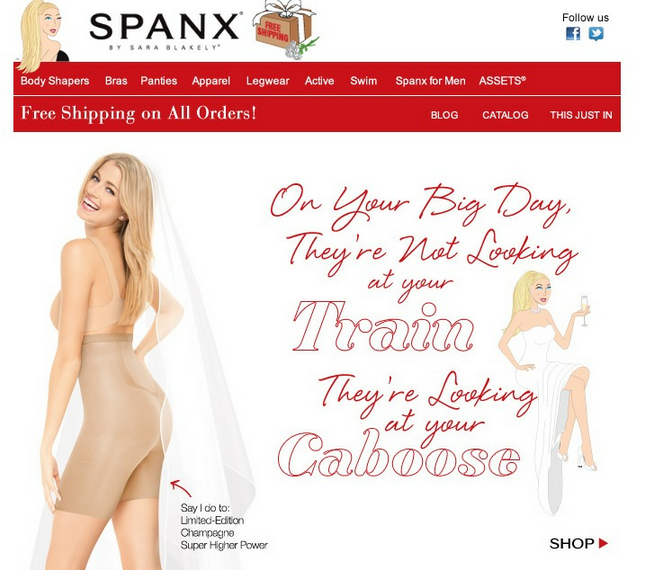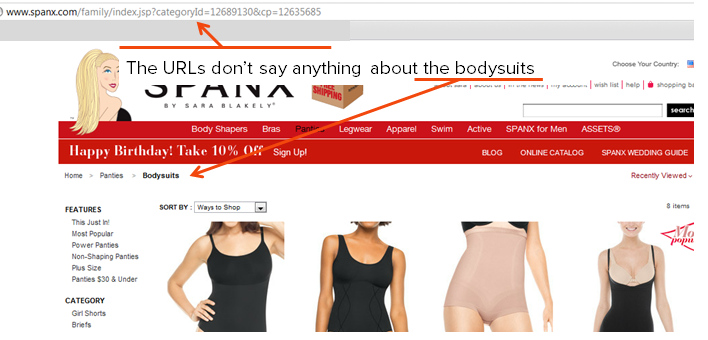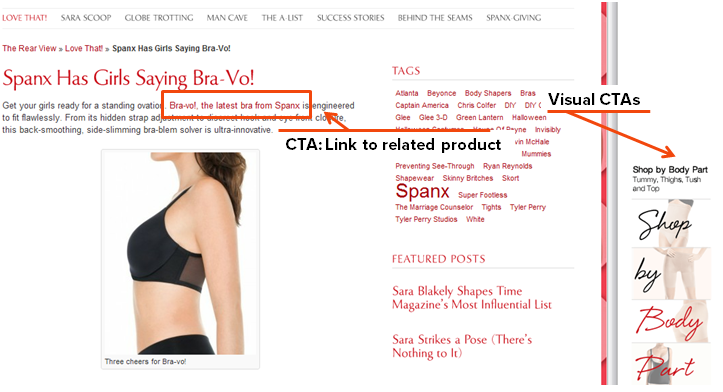How many times have you driven past an eye-catching billboard, read an unforgettable slogan, or found yourself humming a somewhat irritating jingle only to visit the corresponding website and find that it’s weak and lacking valuable information?
I regularly see brands going to market with robust media campaigns, but then they drop the ball on their online content marketing strategies – largely because they just didn’t take the time to map out their content marketing plan. You need to approach digital content marketing in the same manner as your general marketing or advertising campaigns.
The user experience is a key element in successful offline marketing campaigns, and the same holds true with content marketing. In fact, Google has advised businesses to focus on the user if they want to be visible online, let alone have an impact on site visitors. Here’s what Distinguished Search Engineer Matt Cutts has said about creating content that engages users to win search rankings:
By chasing a great user experience above search rankings, many sites turn out to be what search engines would want to return anyway.
Building a “great user experience” online might feel like a more daunting experience than creating one offline – especially with the rise of multichannel integration. But targeted (and promoted!) website content can be the glue that holds your online lead generation strategy together. Let’s consider how we can streamline and simplify your content marketing plan by incorporating the same elements of general marketing strategies.
Embedded in the brains of most marketers is the mantra of the McCarthy’s Four P’s of marketing: Product, Price, Promotion and Place. These same elements must be considered when you craft your content marketing strategy. Visitors to your website look for the four P’s innately, so it is critical to have related information readily available to them.
Let’s take a closer look at McCarthy’s Four P’s and how they are relevant to today’s online content marketing strategies. I’ll spend a bit of time explaining each P and we’ll explore one website that is hitting the mark with their content marketing strategy.
The Four P’s of Your Content Marketing Plan
Product: Target content to support online business goals
In marketing, this is about as straight-forward as it gets. You need to keep your products and services at the forefront of your marketing plan, understand the ebbs and flows to the sales cycle and showcase complementary products together to increase average order value and cross-sell potential.
Content marketing requires a similar approach. It is critical to reach the right audience with content that matters to them, without losing sight of how this content can generate demand or interest in your products or services. In some cases, products will need their own explanatory content, and in others, you can build more objective content about issues bigger than your business that still support your overall online business goals.
To achieve optimal ROI for your internet marketing strategy, consider the following:
- Give your product ample real estate on your website.
- Be sure to develop content for products or service pages that highlights the key features and benefits. At the same time, provide your audience with ample information so they realize that they just can’t live without it.
- Develop content (research-based articles, whitepapers, blog posts and/or graphics) with emotional triggers that will generate demand for your product. This is your opportunity to sell, sell, sell.
- Use the cyclical demands for your products and offerings to create timely content.
- Identify relevant products to complete your product mix. Be sure to provide ample information about these complementary products in your content strategy.
Now, for you visual folk, here’s a site example. A few months ago I found myself hopping onto the Spanx website after seeing that Forbes put Spanx founder, Sara Blakely, in the spotlight on the cover of their Billionaires issue. (For those of you who haven’t yet heard of this brand of shapewear, it is quite the success story.)
Upon first landing on the site I was immediately captivated by their fun and lively copywriting. Right now they are heading into wedding season and I found a headline stating, “On your big day, they’re not looking at your train, they’re looking at your caboose.” Next to this copy was a large image of a derriere fashioning their shapewear. Hilarious! A great example of using seasonal product demand to lead content creation.

A product referenced in the blog has its own dedicated landing page listing the key benefits of the shapewear (as does every product they offer). In fact, Product is everywhere on this site, starting with its homepage. Front and center is a slim model basically baring it all in her “Super Higher Power” shapewear. To be honest, she hardly looks like she has anything to tuck in or suck in, but the point is that this “magical” shapewear will give a more streamlined curve to the body and not reveal any little bumps or divots.
Right now, they are right on target with their audience. As I was most recently perusing their site a slim and sophisticated coworker caught a glimpse and stated she was aiming to purchase their product for an upcoming wedding. My jaw just about dropped as I dare say she hasn’t a hint of bulge factor to her svelte figure. Back to the point, I was surprised the model Spanx chose for the image looked like she hardly needed the “magical” shapewear, but then my petite coworker commented that she was purchasing a pair. Clearly, the company is making its product accessible to a larger audience than might meet the eye – and the visual content helps. Spanx has found a niche and has identified a key reason to buy during the spring and summer, when most are sporting shorts and bikinis.
Price: Use relevant calls to action (with price details when possible)
In marketing, identifying the right price to take to market for your product is almost a science in itself. You need to hit the price that will make people ready to pull out their wallets. By the time you are developing your online strategy, you’ve taken painstaking measures to identify the best price for that product. But in the online world, hitting the right price might be thought of as nailing the call to action that will make people ready to click to your virtual shopping cart or contact form. This is a challenge for many marketers – Brafton has reported that 66 percent say they struggle to align content with conversion funnels.
As simple as this one sounds, many marketers are missing the boat on their content strategy when it comes to displaying calls to action and, in the case of ecommerce businesses, price details. Regularly I am engrossed in compelling content that references products or services, but doesn’t show them to me on the page. Many ecommerce sites even showcase product images alongside the content, but then neglect to offer pricing information . Content marketers – let’s remember to list product images, product details and pricing together. Heck, even include a link to your shopping cart on every relevant content page. You’ve got to keep the shopping experience quick, shallow (not 10 clicks away!) and streamlined.
Additional points to consider:
- Determine which calls to action work best for your audience. Go ahead and test a few. Examples may include: product images/price/links to product pages, email registration, Contact-Us form, whitepapers, case studies, social media icons, Toll-free customer service number, live chat or even promotional offers.
- Display CTAs next to your content
If we go back to the example of Spanx, every content page has relevant product featured in a side navigation bar. Even the product navigation bar has a fun content angle. The calls to action have simple but striking language, and there are images to clue readers as to what they would be clicking toward. Once a visitor clicks, product pages are well optimized with informative visual content, easy-to-read prices and features that position the shapewear as well worth the cost.
Promotion: Fuel search and social discovery
Put your best strategy forward and you’ll surely get your site ranking above the competition. A key step to strategically promoting website content is ensuring it is SEO-friendly. Eighty-nine percent of consumers start product research through search and you want to ensure your content is included among the results they find.
But creating search-friendly content isn’t the only way to stand out online or reach shopping web users. Ninety-five million Americans turn to social media to research shopping decisions. Plus, social marketing increasingly contributes to search discovery, with the leading search engines using social data as a ranking factor.
To position your brand ahead of the competition and promote it well across the web, you have to make it keyword-rich (though not keyword stuffed!) and use social channels to amplify the reach of your pages that cover products and key value props.
- Is your content SEO-friendly for search? Optimize all pages on your site starting with your homepage and ending with your “thank you” page.
- Be sure to include your top converting keyword terms into your content strategy.
- Identify what your competition is doing well and find where you are falling short. How does your content strategy compare to theirs? Are you outspending them with PPC while they are winning organically?
- How well are you currently promoting your product online? Even introverts need to get social – get your message out to your target audience through channels such as LinkedIn groups, Facebook, Twitter and Google+. Find out where your target audience is hanging out online and entice them to your site with the content you’ve spent so much time developing.
Spanx has a strong social presence with notable engagement on Twitter, Facebook and Pinterest. It posts regularly to each channel and the company has mastered creating a good balance of product promotion and branded content relevant to their audience.

It could, however, do a better job at optimizing its site SEO. Spanx is currently neglecting one of the fundamental search practices of optimized URLs. Currently, its URLs are generic and do not include any keyword optimization or product names. Title tags could also use some work to make them more targeted and relevant. Still, they’re hitting the mark with user-friendly content that naturally incorporate keywords – and recent search updates (including Google Penguin) aim to reward sites for focusing on users above search crawlers.
Place: Create easy navigation to drive conversions
If only driving conversions was as easy as strapping on a pair of ruby red slippers and clicking our heels! Well, actually, it is almost that simple – or it should be. With general marketing, businesses decide where to showcase their products. In the world of digital content, you have to design your site so the content with the most impact is extremely easy discover. You’ve got to keep the shopping experience quick, shallow (not 10 clicks away!) and streamlined.
Determine the best place to showcase your content on your site to make it easy for users to find and navigate. And reduce the number of clicks they have to carry out to get from a blog post to a page where they can buy a related product, or from an industry news article to a page where they can download the more in-depth whitepaper. Let’s not have visitors leaving your site singing like Bono, “I Still Haven’t Found What I’m Looking For.”
Think about the following:
- Where does your content currently live on your site? Is it easy to find? How many clicks does it take to get to the center of … your strategy? (If you are in my age bracket that should remind you of a commercial with an owl. Here’s a reminder!)
- Is your site well-integrated? Is your content visible to the web crawlers? Is it easily accessible from your homepage?
- Be sure to effectively cross-promote so visitors can get from one place to another and, ultimately, seamlessly travel along your top conversion paths.

I found the Spanx site extremely easy to navigate with their shopping cart typically just two clicks away from their homepage. They also make it easy to access the shopping cart from their blog, as the typical navigation was just 3 clicks to the cart.
I just wish they would give more visibility to their blog. Sure it is located on the nav bar of their homepage but it’s just so darn fun to read that it should be given more real estate!
Spanx offers a pretty good model of how you might incorporate the 4 P’s of marketing into your content marketing campaign. If you want to create conversions from your website content, take a page out of the Spanx book. The company does a great job of creating, positioning and promoting content that supports business goals and targets its female audience. (And just in case inquiring minds want to know, Spanx even has a product line for men, wink, wink.)




